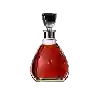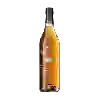
Winery Piétri GéraudBanyuls
This wine generally goes well with beef and mature and hard cheese.
Wine flavors and olphactive analysis
On the nose the Banyuls of Winery Piétri Géraud in the region of Languedoc-Roussillon often reveals types of flavors of apricot, chocolate or raisin and sometimes also flavors of honey, dried apricot or non oak.
Food and wine pairings with Banyuls
Pairings that work perfectly with Banyuls
Original food and wine pairings with Banyuls
The Banyuls of Winery Piétri Géraud matches generally quite well with dishes of beef or mature and hard cheese such as recipes of beef miroton or chicken breast franc comtoise.
Details and technical informations about Winery Piétri Géraud's Banyuls.
Discover the grape variety: Queen
Intraspecific crossing obtained in 1954 in the United States by Professor Harold P. Olmo of the University of Davis (California) by crossing the Hamburg Muscat with the Sultana.
Last vintages of this wine
The best vintages of Banyuls from Winery Piétri Géraud are 1965, 1952, 1950, 1962
Informations about the Winery Piétri Géraud
The Winery Piétri Géraud is one of of the world's greatest estates. It offers 23 wines for sale in the of Banyuls to come and discover on site or to buy online.
The wine region of Banyuls
Banyuls wines come from the South-eastern Part of Roussillon, in the south of France, in the lower Pyrenees, a few kilometres from the Spanish border. These naturally Sweet wines are consumed both as an aperitif and as a dessert. They come in a wide range of hues, from GoldenGreen (Banyuls Blanc) to Amber (Banyuls Ambré) to the intense garnet of the standard Banyuls Rouge. Unusually among the natural sweet wines of France, all Banyuls wines are made primarily from Grenache grapes of various colors.
The wine region of Languedoc-Roussillon
Languedoc (formerly Coteaux du Languedoc) is a key appellation used in the Languedoc-Roussillon wine region of southern France. It covers Dry table wines of all three colors (red, white and rosé) from the entire region, but leaves Sweet and Sparkling wines to other more specialized appellations. About 75% of all Languedoc wines are red, with the remaining 25% split roughly down the middle between whites and rosés. The appellation covers most of the Languedoc region and almost a third of all the vineyards in France.
The word of the wine: Black Grenache
Grenache is a black grape variety that originated in Spain and is one of the great quality varieties of southern France. Sometimes vinified on its own, it is most often blended with one or more other Rhone or southern grape varieties with complementary qualities such as Syrah, Mourvèdre, Carignan or Cinsault. Its wines are warm, with aromas of red fruits (cherry) and spices; they oxidize with time. Vinified alone or in very large proportions, Grenache Noir also makes great natural sweet wines in Roussillon (Rivesaltes, Banyuls, Maury) and in the Rhône Valley (Rasteau).














